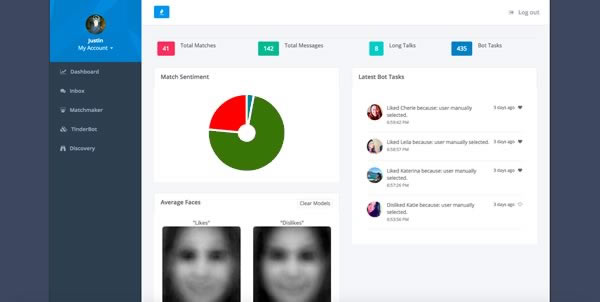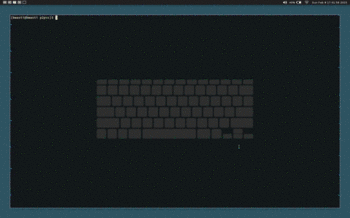As with many a repetitive manual task, it was only a matter of time before a user on the popular dating app Tinder invented a robot to match and message other singles for them.
This week’s GitHub Project of the Week is Tinderbox a machine-learning program built on the Tinder API that learns what types of profiles a user is attracted to, finds matches through the app, and even starts conversations for them using automated messaging. Created by Canadian developer Justin Long, the open-source project was first published back in December but has since taken off in popularity with more than 800 stars in the past week. Long isn’t naïve about how Tinderbox might come off, though. From the perspective of a user on the other side of the chat, it’s a robot trying to pick you up.
“Tinderbox is the first bot I’ve built to interact on my behalf,” wrote Long. “Since it is a tool that automates a lot of the Tinder experience, be forewarned not everyone appreciates being met through a robot. And they certainly don’t appreciate if you decide to use this code to spam the Tinder world.”
Tinderbox is also a full desktop interface for Tinder. The program recreates most of the mobile app’s core functionality through a browser-based virtual server and logs in through Facebook just like the real app. The bot then learns from all your past swipes—likes and dislikes—to develop a computer vision algorithm based on the Eigenfaces facial recognition model. The more left and right swipes a user has made, the more accurate the algorithm is.
Below is a shot of Long’s Tinderbox desktop dashboard monitoring all his matches and conversations.
Like a robot replacing a human on an assembly line, Tinderbox automates a user’s likes and dislikes far more efficiently than swiping left and right ever could. Once a match is made, the program’s built-in “Tinderbot” starts auto-messaging in the chat window, again using machine learning to determine positive and negative replies. When the bot is stumped by the subtleties of human small talk, the user gets a notification to take over.
According to Long’s blog the bot is actually “amazingly effective,” racking up 21 matches in two days, starting conversations with all of them (and achieving four “extended conversations”), and resulting in at least 10 dates. Teetering a bit closer to borderline creepy territory, the robot also “makes moves.” Long defines a “move” as any step the bot makes in either sending a message or making a swipe.
Whether or not users do in fact find the intelligent Tinder helper creepy, Long warns that as soon as you turn it on, Tinderbox will start messaging any existing Tinder matches, too. For me at least, the most fun part about the in-app Tinder experience is turning casual dating into a sort of social arcade game where you win by actually taking a conversation outside the app and turning it into something real.
Putting aside the fact that Tinderbox removes yet another layer of real human interaction out of social media, letting a machine-learning algorithm do the swiping for you takes all the fun out of it.
Top 5 projects trending on GitHub this week
#1: .htaccess Snippets: A collection of .htaccess snippets compiled by Phan An, spanning use cases such as rewriting and redirection, security, and performance.
#2: React Canvas: Developed by Flipboard, React Canvas is a set of high-performance standard React components that abstract the underlying rendering implementation, adding the ability to render React components to <canvas> rather than DOM.
#3: p2pvc: A point-to-point color terminal video chat. GIFs speak louder than words.
#4: HubPress is an open-source Web application for building responsive blogs, currently compatible with Chrome and Chrome for Android.
#5: Free Programming Books have been a staple atop GitHub’s trending charts for quite a while, most recently popping up in early January.








